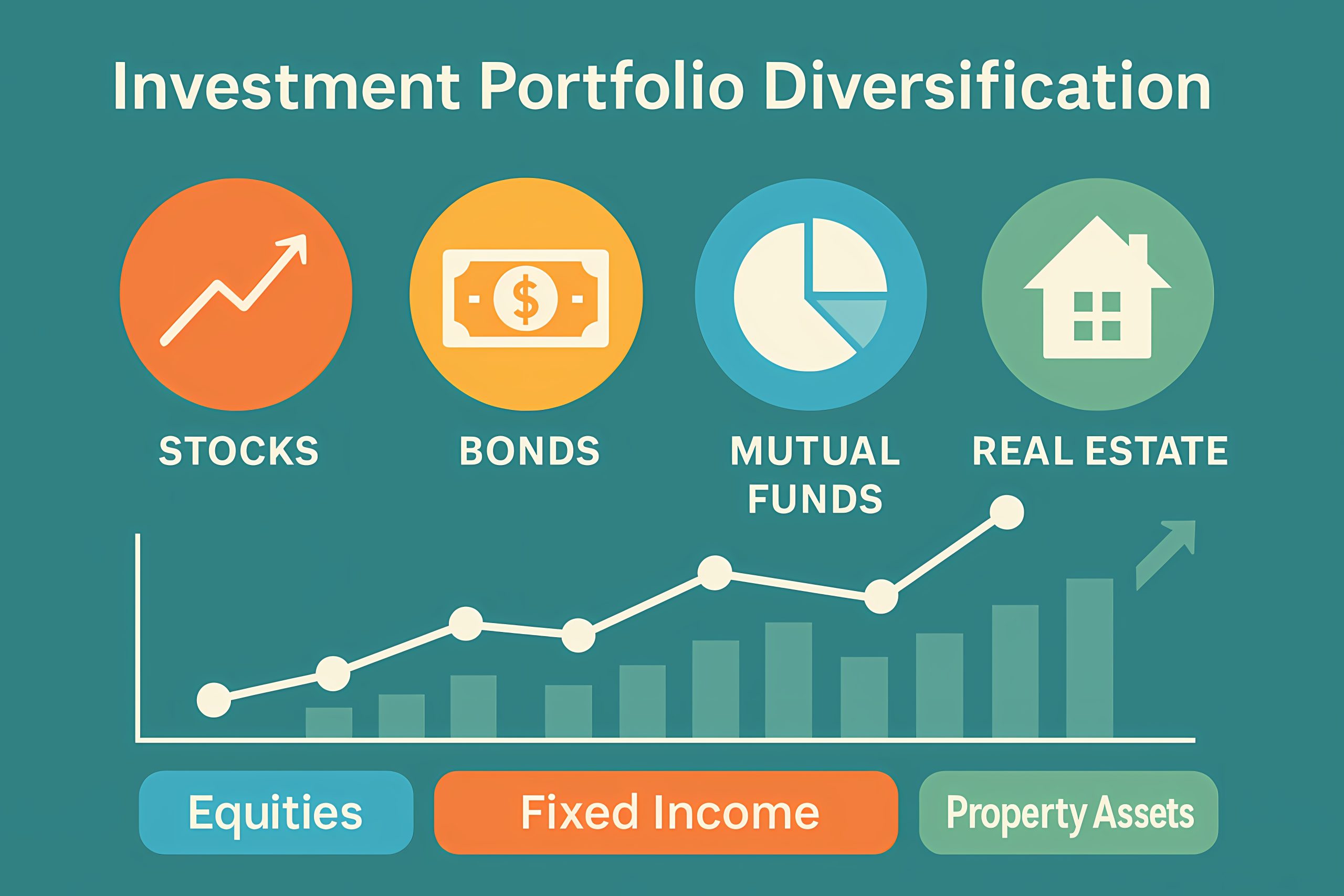While it’s true that investing should be part of any long-term wealth-building strategy, establishing smart, sensible strategies right from the beginning is key. For example, you should never place all of your hopes for your financial future in just one market sector or asset type.
Portfolio diversification helps you build a strong investment portfolio by spreading your investments across multiple assets. This helps with risk management by shielding you from the impact of any one asset’s dips and dives. Let’s take a closer look at how optimal asset allocation works.
What Is Diversification in an Investment Portfolio?
Investment diversification is the process of allocating investments across multiple assets, sectors, and options. This helps minimize risk while supporting steady, reliable returns, as not every asset in your portfolio will move the same way at the same time.
Some portions of your portfolio may underperform at a given time while others maintain or even skyrocket. Diversification helps stabilize overall returns by buffering losses and keeping risk as low as possible. Here are a few essential diversification types to know:
Asset classes
Diversifying across asset classes involves choosing a mix of stocks, bonds, commodities, and real estate assets. Bonds are famous for their stability, while stocks can offer high growth potential. Commodities and real estate can serve as safeguards against factors like market swings and inflation.
Sectors
Each asset class contains several sectors to consider. Technology, healthcare, finance, and consumer goods are just a few popular examples. Diversifying across market sectors protects investors from downturns any one industry might face in the future.
Geographic regions
Diversification across both international and domestic markets takes your investment strategies global. It also makes you less dependent on the future economic performance of any one country.
Build a healthy, diverse investment portfolio by clarifying your financial goals and determining your capacity for risk tolerance right off the bat. Then allocate your resources across a variety of different assets in a balanced way that supports your long-term objectives.
Benefits of Asset Allocation
Strategy-based asset allocation is the engine that makes diversification so effective. Success isn’t about following trends or adding to your portfolio at random. It’s about mindfully keeping your investment efforts in step with both your approach to risk management and your long-term wealth goals.
Let’s take a closer look at some of the main benefits.
Enhanced return potential
No sector, region, or asset type is a sure thing. Every investment option eventually experiences ups and downs, especially over time. The more you diversify, the better your chances of capitalizing on the long-term growth of your collective portfolio.
Volatility reduction
As any long-time investor can tell you, every market fluctuates. Maintaining a diverse mix of investment types helps iron out some of the bumps along the way, keeping your gains more stable overall.
Alignment with risk tolerance
Risk management is crucial when it comes to getting the most out of portfolio diversification. Smart asset allocation lets you customize your long-term strategies by balancing stable, trusted picks with high-reward, higher-risk opportunities.
Adaptability to timeframes
The ideal investment timeframe for you will likely depend on the kind of investor you are. For example, short-term investors looking for quicker rewards tend to go for fixed-income assets, while those playing the long game are more likely to gravitate toward equities. Asset allocation lets you set a pace that works for you.
Encouragement of regular rebalancing
Everything shifts over time, including asset values and personal financial goals. Regularly revisiting your allocation strategy ensures your comprehensive portfolio is always aligned with your current goals.
Impact of Market Volatility on Portfolios
Successfully building a foundation in ever-changing times means learning to work with the fact that market volatility simply comes with the territory. Geopolitical events, economic shifts, and changes in collective sentiment about the market all contribute to volatility and the resulting short-term dips.
However, market volatility has less impact on diverse portfolios than those that are more concentrated. This is because volatility affects each asset type differently. For example, bonds usually stay stable (or even increase in value) when stocks are on the decline, helping investors overcome losses.
You’re less likely to succumb to emotional decision-making with a diverse portfolio, as well. Proper planning for uncertainty makes it easier to stay the course, secure in the knowledge that you’ll come out on top in the end.
The Role of a Financial Advisor
Diversifying your portfolio isn’t something you do just once. It’s an ongoing effort that should evolve alongside the market, as well as your personal goals and income. Professional financial advisors like the ones you’ll meet at MyStages® can simplify diversification and take the guesswork out of asset allocation.
A financial advisor can take a close look at your current portfolio and recommend informed shifts to maximize future growth. They can also meet you where you are and help you align your investment strategies with your current stage of life.
Ideally, investors should review their investment portfolios once a year and make appropriate adjustments. Major life events like marriage, inheritances, or career changes should trigger additional reviews. Professional assistance helps ensure you do everything right.
At MyStages®, we understand the need for personalized investment strategies that involve along with individual investors, and we welcome the opportunity to help you build something truly resilient. Contact us today for a consultation.



